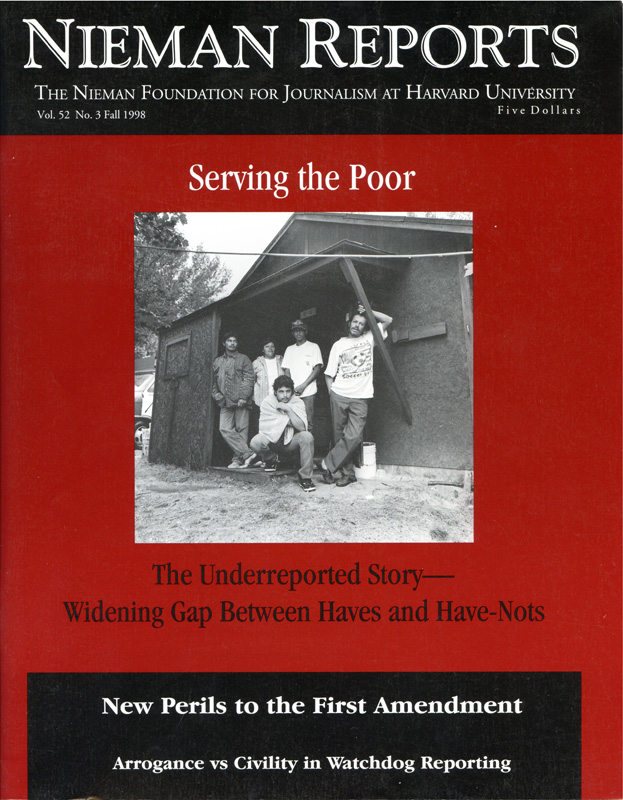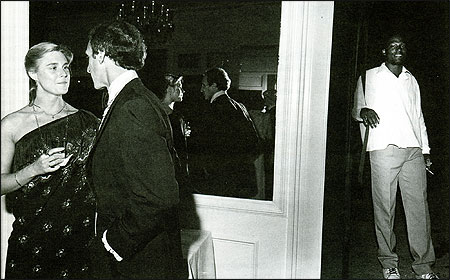Journalist’s Trade
Fall 1998: Serving the Poor Introduction
“I think a strong argument can be made that the residents of [poorer] areas are severely disadvantaged—as citizens, as workers, as consumers—by the lack of serious coverage from television and the lack of local coverage of their neighborhoods by newspapers,” said Maxwell King former Editor of The Philadelphia Inquirer. The reason, of course, is that the media, regardless of their claims of serving all the people, aim for the affluent, the audience that advertisers seek. It would seem, then, that if newspapers want to expand readership they would be worried about the growing gap between the rich and the poor.
By Robert H. Phelps

Serving the Poor
“I think a strong argument can be made that the residents of [poorer] areas are severely disadvantaged—as citizens, as workers, as consumers—by the lack of serious coverage from television and the lack of local coverage of their neighborhoods by newspapers,” said Maxwell King former Editor of The Philadelphia Inquirer. The reason, of course, is that the media, regardless of their claims of serving all the people, aim for the affluent, the audience that advertisers seek. It would seem, then, that if newspapers want to expand readership they would be worried about the growing gap between the rich and the poor.
September 15, 1998
Share this article
 Belle Meade Country Club, Belle Meade, Tennessee, 1981. © Barbara Norfleet, “All the Right People,” Little, Brown and Company.
Belle Meade Country Club, Belle Meade, Tennessee, 1981. © Barbara Norfleet, “All the Right People,” Little, Brown and Company.
In a lecture last March, shortly after Maxwell King stepped down as Editor of The Philadelphia Inquirer, he said “I think a strong argument can be made that the residents of [poorer] areas are severely disadvantaged—as citizens, as workers, as consumers—by the lack of serious coverage from television and the lack of local coverage of their neighborhoods by newspapers.” The reason, of course, is that the media, regardless of their claims of serving all the people, aim for the affluent, the audience that advertisers seek. It would seem, then, that if newspapers want to expand readership they would be worried about the growing gap between the rich and the poor. If such worries exist they are not reflected in their coverage of economic inequality. Moreover, civic journalism and the various committees and studies of what’s wrong with the media have also neglected the problem. In the following article Michael Kirkhorn explores this neglect.
Serving the Poor
“I think a strong argument can be made that the residents of [poorer] areas are severely disadvantaged—as citizens, as workers, as consumers—by the lack of serious coverage from television and the lack of local coverage of their neighborhoods by newspapers,” said Maxwell King former Editor of The Philadelphia Inquirer. The reason, of course, is that the media, regardless of their claims of serving all the people, aim for the affluent, the audience that advertisers seek. It would seem, then, that if newspapers want to expand readership they would be worried about the growing gap between the rich and the poor.




